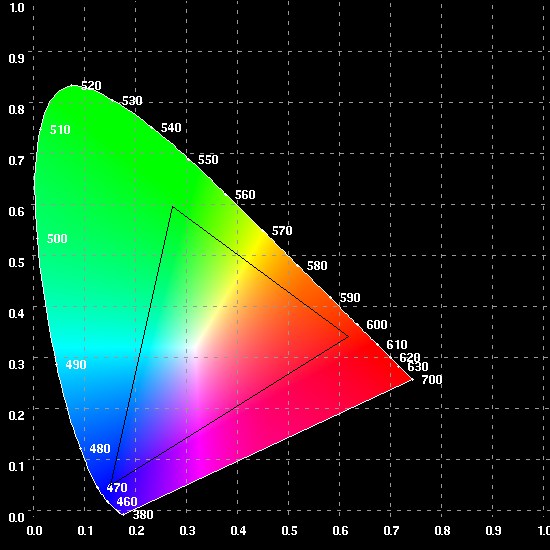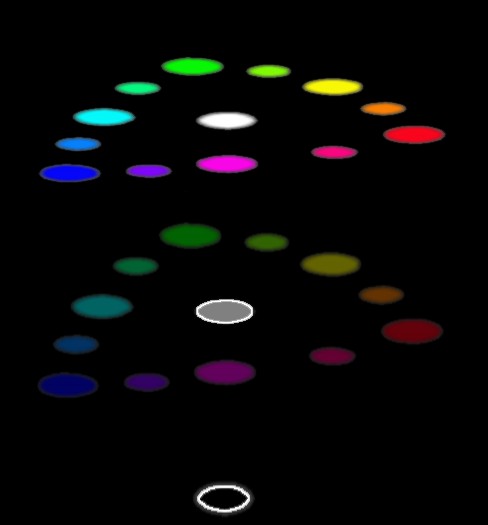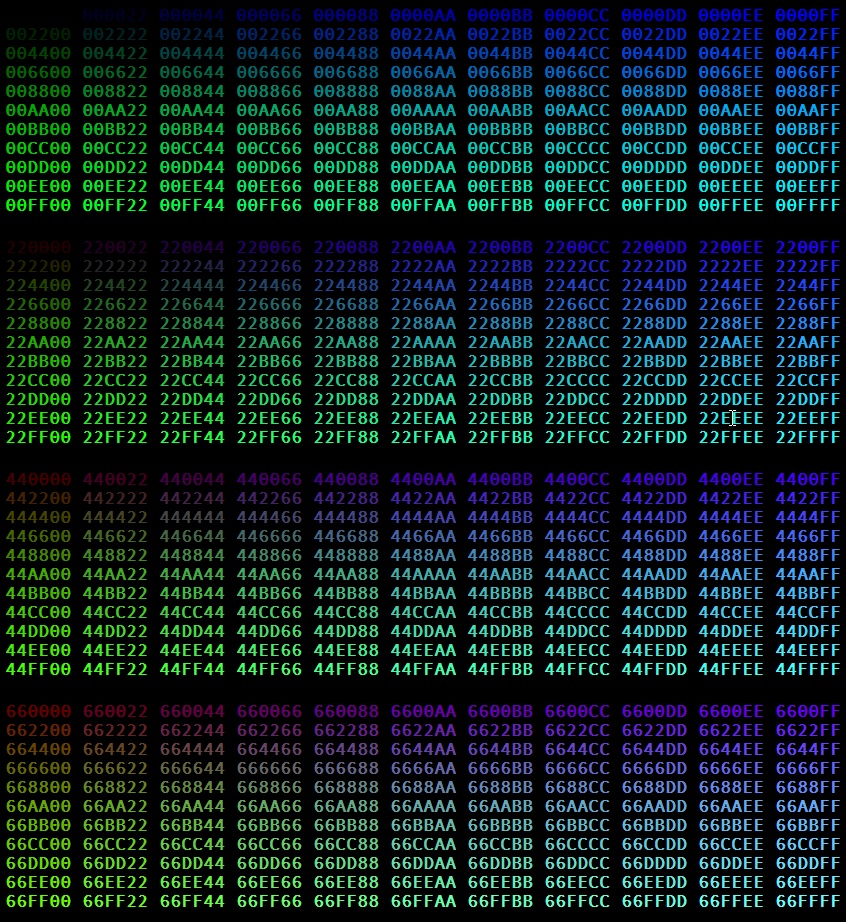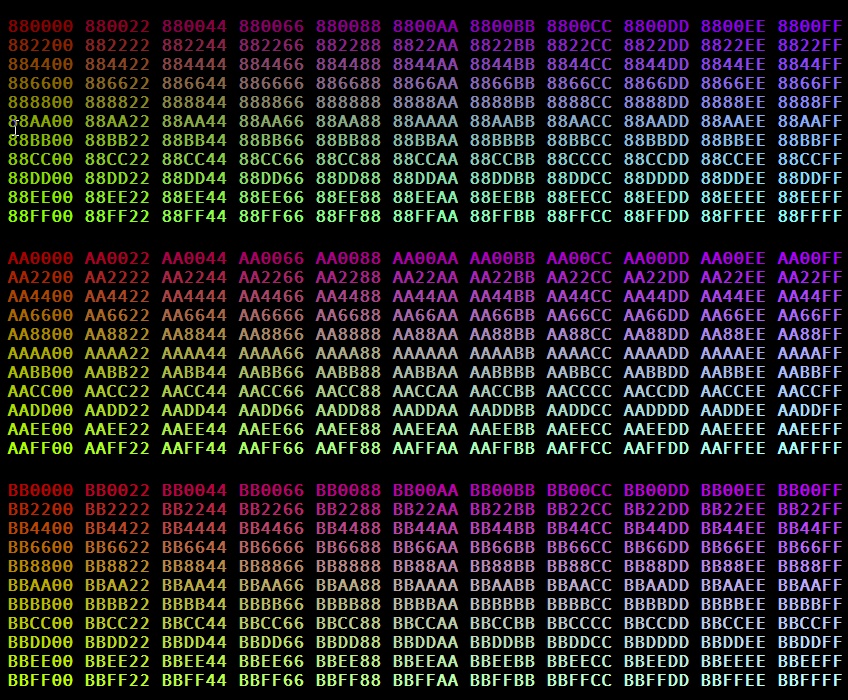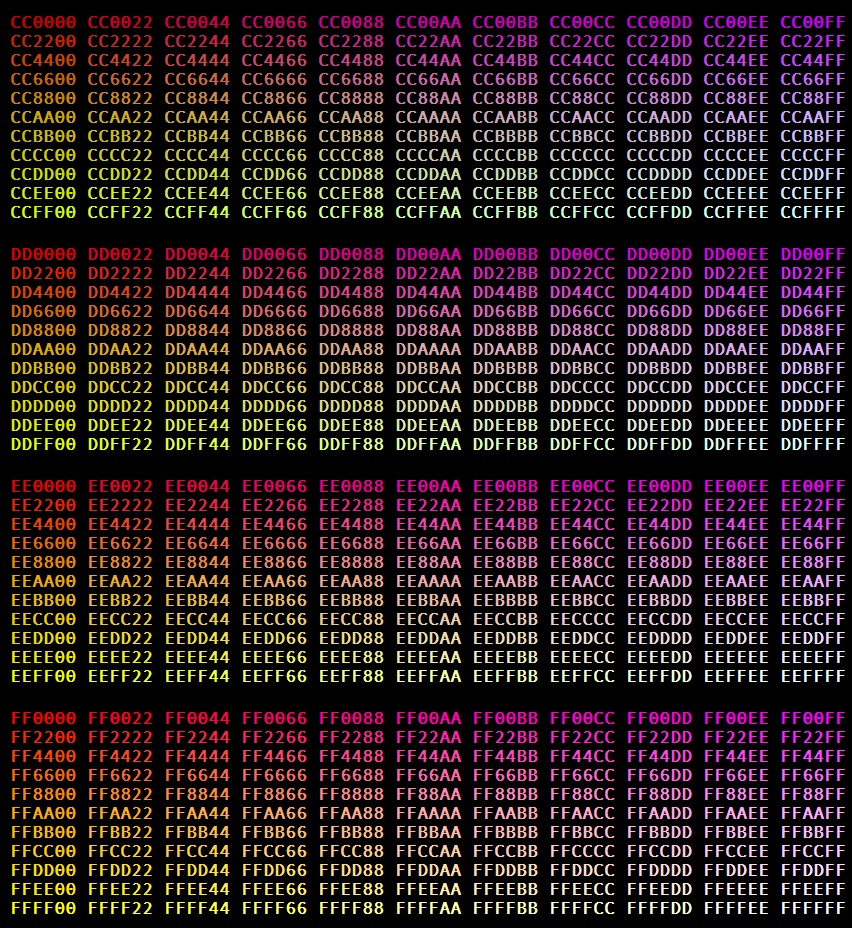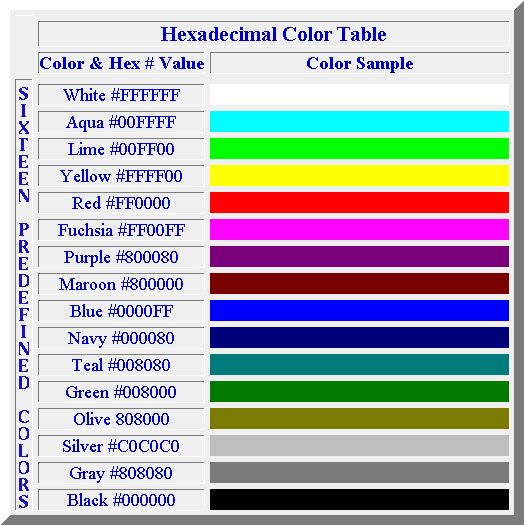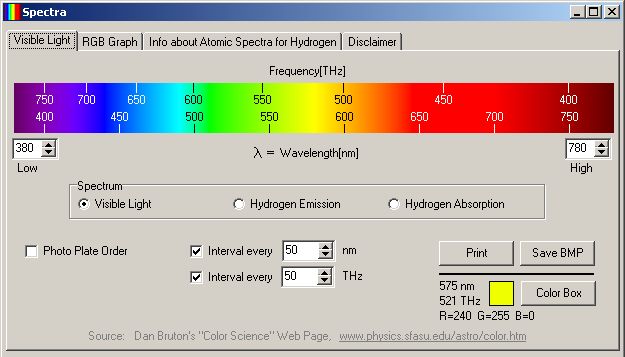
red - red .

Sign - In all color signs the right fist is closed with the thumb extended vertically and the elbow held high. The sign for RED is placed close in front of the right shoulder. For pure 100% red the tip of the thumb is seen as on the horizon from the eye.
Hint - Compare to GREEN and BLUE. The three 100% full intensity R-G-B colors are in the same horizontal plane with RED and WHITE.
Tech - The (Hexdecimal) hex color #FF0000 has only the RED light source (the first two characters) turned full on and the GREEN and BLUE light sources are turned to full OFF. For a more complete description of HTML and HEX colors go to 3Schools
Comment - The colors may seem to be arbitrarily placed but in fact they are logically located based on the response of the human eye. With this system, after the four colors RED GREEN BLUE and BLACK are fixed in space ALL of the other colors fall into a logical position.
. Sign - The fist is closed with the thumb extended vertically and the arm is extended to the full out position directly in front of the the left shoulder.
Hint - Compare to WHITE and MAGENTA which are also on the same horizontal plane.
Tech - The three primary additive colors, (R-G-B = Red-Green-Blue) are placed on a horizontal plane at eye level as is WHITE at the center. These colors can be mixed and and still remain on the horizontal plane. Hex color for Green is #00FF00.
. Sign - The fist is closed with the thumb extended vertically and with the elbow held high and it is held above the left shoulder next to the left cheek.
Hint - Compare to RED and GREEN.
Tech - The Hex color for Blue is #0000FF
. Sign - The fist is closed with the thumb extended vertically to the horizon and it is held arm half extended out from the right shoulder.
Hint - Compare to RED and GREEN.
Tech - In additive colors, such as you see on a computer screen, YELLOW is made up of RED and GREEN. Yellow Hex=#FFFF00
. Sign - The fist is closed with the thumb extended vertically to the horizon and it is held arm half extended from its own shoulder.
Hint - Compare to GREEN and BLUE. .
Tech - Cyan is made up of equal amounts of Blue and Green it's Hex color=#00FFFF Comment - Cyan, yellow and magenta are the colors commonly used in the printing industry and you can usually see them in their pure forms as printing alignment marks in the Sunday comics.
. Sign - The fist is closed with the thumb extended vertically to the horizon and it is held with the tip of the thumb just at the eye.
Hint - Compare to RED and BLUE. Purple is darker and bluer than magenta.
Tech - The color Magenta is made up of equal amounts of Red and Blue it's Hex number is #FF00FF
. Sign - The signing hand (the right hand) is closed into a fist with the tip of the thumb held vertically at navel level and with the arm half extended.
Hint - All color signs are done with a fist shaped hand, with a thumb up and with the elbow held high. Compare to WHITE and GREY. Notice that white, grey and black, are all located in a vertical column the same distance from the body. This column defines the arm half extended position found in many other signs as in YES.
Tech - The Hex color for black = #000000 because it has all three colored light sources (RED-GREEN-BLUE - RGB) turned to 00 which equals full OFF.
. Sign - Closed fist with the thumb extended up. The top of the thumb is exactly on the horizon with the elbow held high and the arm halfway extended.
Hint - Compare to LIGHT OFF and BLACK and LIGHT ON and GREY. If the thumb is then lowered into the gripped fist position it means hold the light in the ON position.
Tech - The Hex color #FFFFFF has all three R-G-B light sources turned to full ON. If you look at your computer screen with a magnifying glass you can easily see the glowing colored dots.
. Sign - The fist is closed with the thumb extended vertically and held just half way along the vertical column between WHITE and BLACK at the level of the xiphoid process.
Hint - Black, white and grey each have equal amounts of the three primary (RGB) light emitting colors (Red-Green-Blue), but grey doesn't have as much as white and black doesn't have any at all.
Tech - Hex color for GREY is #AAAAAA which is half way between Black Hex=#000000 and white Hex=#FFFFFF
These colors are the half way to black and are for definitional purposes and you are not expected to learn at first but just to know that they exist and have been defined. However, these are exactly defined colors and color locations will be useful for stating colors more specifically.

green
- green
. 

BLUE
- blue
. 

YELLOW
- yellow
. 

CYAN
- cyan
. 

MAGENTA
- magenta
. 

BLACK
- black
. 

WHITE
- white
. 

GREY
- grey
. 
